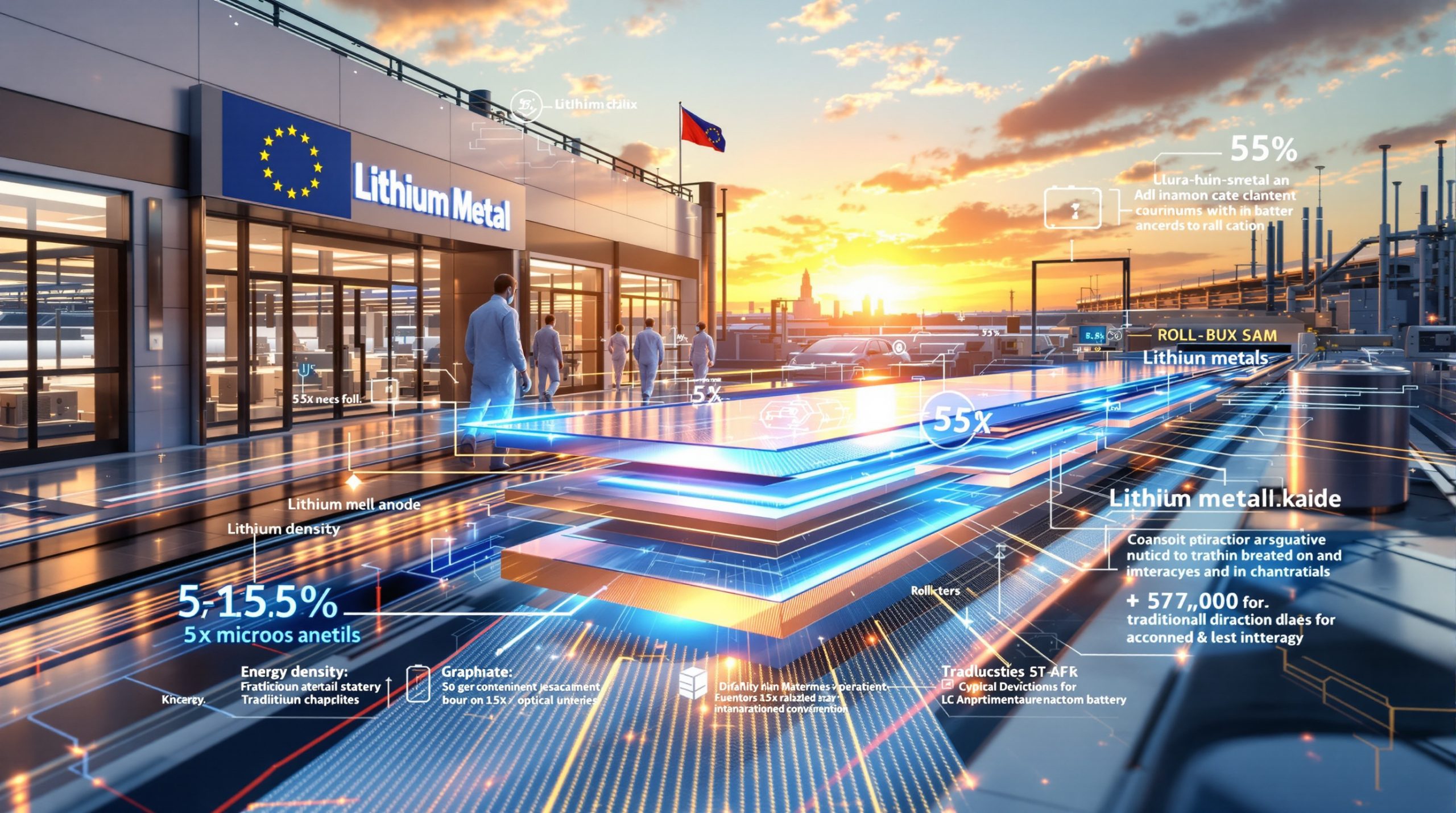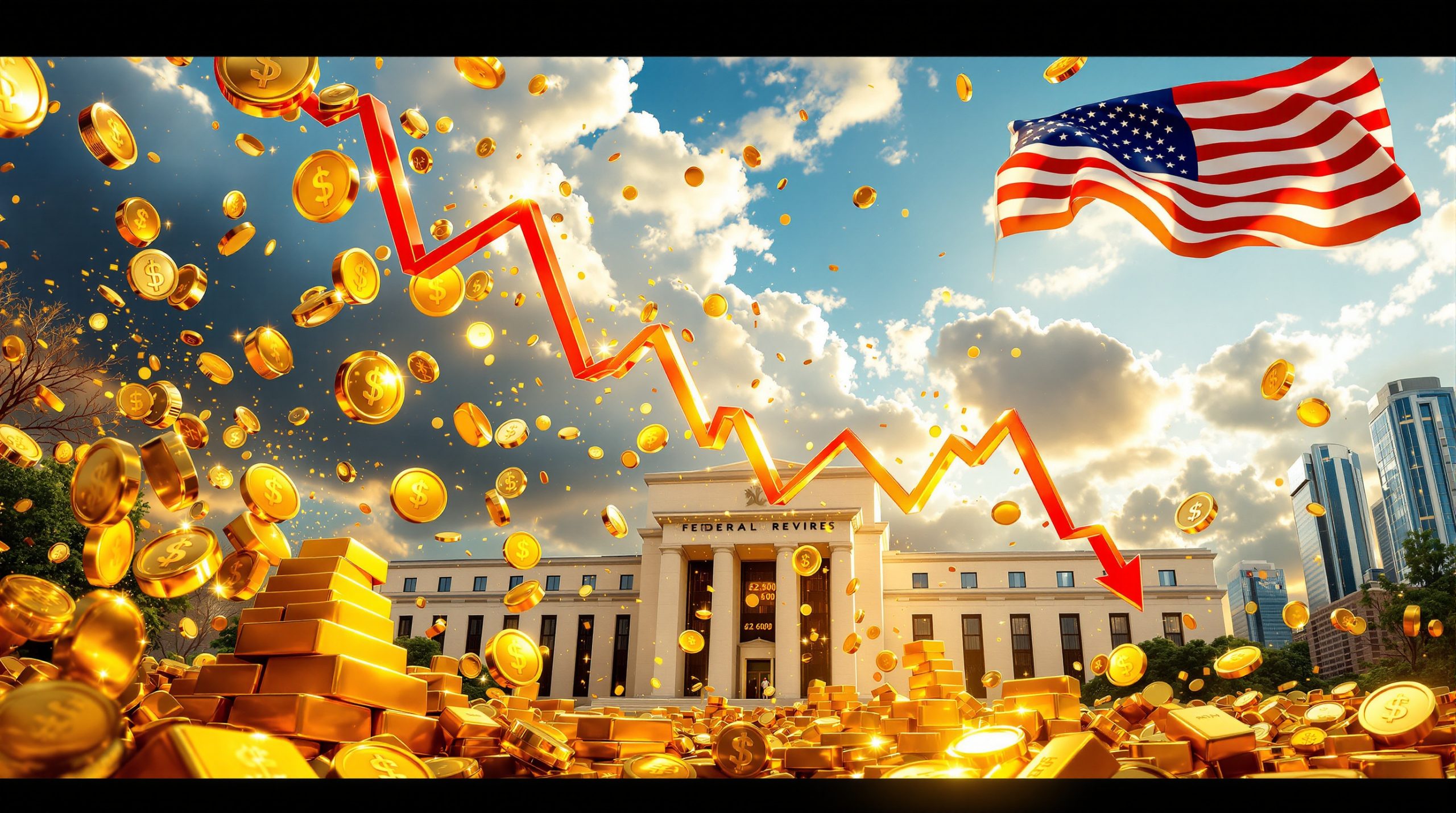Understanding the Strategic Importance of REE Trade Agreements
Rare earth elements have emerged as the invisible backbone of modern civilization, powering technologies from smartphones to military defense systems. These 17 metallic elements, despite their abundance in Earth's crust, create unprecedented strategic vulnerabilities due to highly concentrated processing capabilities. China's dominance over 90% of global rare earth supply has transformed these materials into powerful geopolitical tools, as demonstrated by recent rare earth elements trade deal negotiations between Washington and Beijing.
The October 2025 framework agreement reached during the ASEAN Summit in Kuala Lumpur illustrates how critical these materials have become to international relations. US Treasury Secretary Scott Bessent confirmed that China's expanded export controls on rare earth elements and magnets directly triggered President Trump's threat of 100% tariffs on Chinese imports, scheduled to take effect November 1, 2025.
Key factors driving REE strategic importance:
• Technological dependency: Essential for semiconductors, electric vehicles, and defense technology
• Processing bottlenecks: Sophisticated separation and purification technologies concentrated in single locations
• Supply chain vulnerability: Sharp price spikes and global shortages following export restrictions
• National security implications: Critical materials for advanced military systems and infrastructure
The materials' strategic value extends beyond their physical properties. Recent market disruptions caused by export controls have created immediate supply shortages across multiple industries, demonstrating how rare earth elements trade deal frameworks function as economic weapons in international diplomacy.
How Do Current REE Trade Frameworks Address Global Supply Challenges?
The evolving landscape of rare earth trade negotiations reveals sophisticated approaches to managing supply security while balancing competing national interests. The recent US-China framework demonstrates how bilateral partnerships can address immediate crisis situations while establishing longer-term stability mechanisms.
Furthermore, Trump's critical minerals order has significantly influenced the urgency surrounding these negotiations, creating pressure for comprehensive solutions that address both immediate supply concerns and strategic positioning.
Bilateral Crisis Management Mechanisms
The Kuala Lumpur negotiations marked the fifth round of in-person discussions since May 2025, indicating sustained diplomatic engagement despite escalating tensions. These talks produced concrete outcomes that directly address supply chain vulnerabilities:
Immediate stabilization measures:
• One-year delay on China's new licensing regime for rare earth mineral and magnet exports
• Tariff truce extension beyond the November 10, 2025 expiration date
• Emergency consultation protocols for future supply disruptions
• Policy review processes allowing for framework adjustments
US Trade Representative Jamieson Greer characterised the agreement as finding a path forward where both nations can achieve more access to rare earths from China while helping balance trade deficits through stronger US exports. This approach represents a shift from purely adversarial trade relations toward managed interdependence.
Multilateral Integration Strategies
The framework negotiations occurred within broader regional engagement contexts, with discussions taking place during the ASEAN Summit and setting the stage for the APEC summit in Gyeongju, South Korea. This multilateral approach creates additional stability through:
| Framework Component | Implementation Method | Expected Timeline | Risk Mitigation |
|---|---|---|---|
| Supply Access Agreements | Bilateral quota arrangements | 1-2 years | Reduced price volatility |
| Processing Partnerships | Technology transfer coordination | 2-4 years | Diversified refining capacity |
| Emergency Protocols | Rapid consultation mechanisms | Immediate | Crisis response capability |
| Policy Harmonisation | Regulatory alignment processes | 3-5 years | Reduced compliance complexity |
The negotiations also addressed broader trade relationships, including large-scale purchases of US soybeans, fentanyl crisis cooperation, port entrance fees, and TikTok ownership transfer. This comprehensive approach demonstrates how rare earth elements trade deal frameworks increasingly function within integrated economic arrangements rather than standalone agreements.
What Are the Key Components of Successful REE Trade Agreements?
Effective rare earth trade frameworks require sophisticated balancing of immediate supply security needs with longer-term strategic objectives. In addition, the recent US-China negotiations reveal several critical components that determine agreement success and durability.
Supply Security Mechanisms
Emergency access provisions form the foundation of successful REE trade deals. The current framework includes China's agreement to delay rollout of its new licensing regime for exports of rare earth minerals and magnets by one year, pending policy review. This mechanism addresses immediate supply security concerns while creating space for longer-term solutions.
Graduated response protocols help manage escalation risks. However, Treasury Secretary Bessent's statement that talks had defused the threat of Trump's 100% tariffs on Chinese imports demonstrates how frameworks can incorporate de-escalation mechanisms that prevent trade disputes from disrupting critical supply chains.
Investment Protection and Technology Transfer
Modern rare earth trade agreements increasingly recognise that supply security requires substantial cross-border investments in mining, processing, and research capabilities. The framework addresses technology transfer through coordinated approaches to:
Processing capacity development:
• Joint investment in separation and purification facilities
• Workforce training and technical expertise sharing
• Environmental compliance coordination across jurisdictions
• Quality assurance standardisation for international trade
Risk management structures:
• Currency hedging arrangements for long-term contracts
• Dispute resolution procedures for investment conflicts
• Force majeure clauses addressing geopolitical disruptions
• Intellectual property protection for shared technologies
The success of these mechanisms depends heavily on maintaining political stability and mutual trust between participating nations, as demonstrated by the cautious approach taken by Chinese Vice Minister Li Chenggang, who characterised the framework as a preliminary consensus requiring internal review.
Which Countries Are Leading REE Trade Deal Negotiations?
The global landscape of rare earth trade negotiations involves several key players, each bringing unique strategic advantages and vulnerabilities to the negotiating table. Consequently, understanding these dynamics is crucial for assessing the stability and effectiveness of emerging frameworks.
Dominant Supply Chain Controllers
China's position as controller of over 90% of global rare earth supply creates both opportunities and responsibilities in trade negotiations. Recent export controls on rare earth elements and magnets have demonstrated China's willingness to use this dominance as a strategic tool, causing sharp price spikes and global shortages that forced urgent diplomatic responses.
Chinese negotiators, led by Vice Premier He Lifeng and trade negotiator Li Chenggang, have maintained cautious approaches to framework development. Li's statement that the US position has been tough while China has firmly defended its interests and rights illustrates the delicate balance between commercial cooperation and strategic competition.
Technology-Dependent Major Economies
United States leadership in rare earth trade negotiations reflects the country's critical dependence on these materials for semiconductors, electric vehicles, and defence technology. Key negotiators including Treasury Secretary Scott Bessent and US Trade Representative Jamieson Greer have focused on securing stable access while maintaining technological competitiveness.
The US approach emphasises:
• Supply diversification through multiple sourcing agreements
• Technology protection while enabling necessary trade flows
• Strategic reserves for national security applications
• Allied coordination through multilateral frameworks
President Trump's confidence that a deal would emerge, combined with planned future meetings in both China and the United States, indicates sustained high-level political commitment to resolving supply chain vulnerabilities. For instance, the China rare earth export agreement demonstrates this commitment to finding mutually beneficial solutions.
Regional Strategic Partnerships
The ASEAN Summit context for the Kuala Lumpur negotiations demonstrates how regional partnerships provide crucial platforms for rare earth trade discussions. Southeast Asian nations increasingly recognise their strategic position as potential alternative suppliers or processing locations for rare earth materials.
Emerging negotiation trends:
• Regional bloc coordination through ASEAN and APEC frameworks
• Technology transfer partnerships with established industrial nations
• Environmental standards harmonisation across borders
• Investment promotion for alternative supply chain development
These regional approaches create additional stability by reducing bilateral dependency and creating multiple pathways for critical material flows.
How Do REE Trade Deals Impact Global Supply Chain Resilience?
The structure and implementation of rare earth trade agreements directly influence the stability and reliability of global technology supply chains. However, recent negotiations demonstrate both the vulnerabilities created by concentrated supply chains and the mechanisms available for building resilience.
Risk Concentration and Mitigation Strategies
China's control over 90% of global rare earth supply creates a single-point-of-failure risk for numerous technology sectors. When export controls caused sharp price spikes and global shortages, the immediate impact on manufacturing supply chains illustrated the fragility of current arrangements.
Supply chain disruption analysis:
• Semiconductor manufacturing faces immediate production constraints without stable REE supplies
• Electric vehicle production depends on rare earth permanent magnets for motors
• Renewable energy systems require rare earths for wind turbine generators and solar panel components
• Defence contractors need specialised materials for advanced guidance systems and communications equipment
Analysts have warned that simultaneous US tariffs and Chinese export limits could severely disrupt high-tech supply chains, creating cascading effects across multiple industries and potentially triggering broader economic disruptions.
Framework Effectiveness in Building Resilience
The October 2025 framework demonstrates several approaches to strengthening supply chain resilience while maintaining economic efficiency. Additionally, the critical minerals strategy pivot has influenced how nations approach supply security:
| Resilience Mechanism | Implementation Approach | Expected Impact | Timeline |
|---|---|---|---|
| Emergency Protocols | Rapid consultation and response procedures | Reduced disruption duration | Immediate |
| Supply Access Guarantees | Minimum allocation commitments during crises | Predictable material availability | 1-2 years |
| Alternative Pathways | Multiple processing and sourcing options | Reduced single-source dependency | 3-5 years |
| Strategic Coordination | Allied nation cooperation frameworks | Enhanced collective bargaining power | Ongoing |
The framework's provision for delaying China's new licensing regime by one year provides crucial breathing space for developing alternative arrangements while maintaining existing supply flows. This approach balances immediate crisis management with longer-term structural adjustments.
Market Stability and Price Volatility Management
Trade frameworks increasingly incorporate mechanisms to reduce the price volatility that has characterised rare earth markets. The agreement to pause punitive actions and extend tariff truces creates more predictable cost structures for manufacturers planning long-term investments.
Stabilisation benefits:
• Reduced inventory costs through more predictable supply timing
• Improved investment planning with clearer regulatory environments
• Enhanced technology development through stable input cost projections
• Strengthened alliance relationships through coordinated supply security approaches
These stability mechanisms help address one of the fundamental challenges in rare earth markets: the difficulty of planning long-term technology investments when input materials face extreme price volatility due to geopolitical tensions.
What Role Do Environmental Standards Play in REE Trade Agreements?
Environmental considerations in rare earth trade agreements represent an emerging but increasingly critical component of framework negotiations. While the October 2025 US-China framework did not explicitly address environmental standards, China's agreement to delay implementation of its new licensing regime pending policy review suggests that sustainability considerations may influence future arrangements.
Regulatory Evolution and Policy Review
The one-year delay on China's rare earth export licensing regime creates space for policy review that could incorporate enhanced environmental standards. This approach reflects growing recognition that sustainable rare earth production requires coordinated international standards rather than purely national regulatory approaches.
Potential policy review areas:
• Waste management protocols for radioactive byproducts from rare earth processing
• Water usage standards addressing contamination risks in mining operations
• Land rehabilitation requirements for post-mining environmental restoration
• Community impact assessment procedures for new extraction projects
The absence of explicit environmental provisions in the current framework may reflect the urgency of addressing immediate supply security concerns, but future negotiations are likely to integrate sustainability requirements more comprehensively.
Technology Innovation and Clean Processing
Rare earth trade agreements increasingly recognise that environmental sustainability requires technological innovation in extraction and processing methods. The framework's emphasis on technology transfer and cooperative development creates opportunities for advancing cleaner production techniques.
Innovation incentives:
• Research funding coordination for environmentally friendly extraction methods
• Technology sharing arrangements for advanced recycling and recovery systems
• Joint development programs for reduced-impact processing technologies
• Environmental compliance harmonisation across international supply chains
These technological approaches address the fundamental challenge that rare earth processing traditionally involves significant environmental impacts, including radioactive waste generation and water contamination risks.
Circular Economy Integration
Future rare earth trade frameworks will likely incorporate circular economy principles that address the full lifecycle of these materials. The growing emphasis on recycling and recovery represents a critical opportunity for reducing environmental impact while enhancing supply security.
Circular economy mechanisms:
• End-of-life product collection systems for rare earth-containing devices
• Cross-border recycling cooperation for efficient material recovery
• Technology development partnerships focused on urban mining techniques
• Economic incentives for circular material flows rather than linear consumption patterns
How Do Geopolitical Tensions Affect REE Trade Deal Negotiations?
Geopolitical dynamics fundamentally shape rare earth trade negotiations, as demonstrated by the high-stakes diplomacy surrounding the October 2025 framework agreement. The strategic importance of these materials means that trade deals often function as proxies for broader international power relationships.
Strategic Competition and Economic Leverage
The timing and structure of the Kuala Lumpur negotiations illustrate how geopolitical tensions create both urgency and opportunity in rare earth diplomacy. Trump's 100% tariff threat, scheduled to take effect November 1, 2025, represented a dramatic escalation that forced rapid diplomatic responses.
Escalation dynamics:
• Export control triggers: China's expanded restrictions on rare earth elements and magnets
• Tariff responses: US threats of comprehensive import duties
• Negotiation pressure: Four-day deadline for framework resolution
• De-escalation mechanisms: Mutual agreement to pause punitive actions
Chinese Vice Minister Li Chenggang's characterisation of negotiations as involving tough US positions while China firmly defended its interests illustrates the adversarial context underlying technical trade discussions.
Diplomatic Relationship Management
The framework negotiations demonstrate sophisticated approaches to managing strategic competition while maintaining essential economic cooperation. President Trump's expression of confidence in reaching a deal, combined with planned future meetings in both countries, indicates recognition that rare earth trade requires sustained diplomatic engagement.
| Relationship Dynamic | Negotiation Characteristics | Stability Indicators | Risk Factors |
|---|---|---|---|
| Strategic Competition | High-level political involvement | Presidential commitment | Escalation potential |
| Economic Interdependence | Technical working group cooperation | Existing trade relationships | Supply disruption risks |
| Regional Integration | Multilateral summit frameworks | ASEAN and APEC participation | Competing alliance systems |
| Crisis Management | Rapid response protocols | Emergency consultation mechanisms | Time pressure dynamics |
The agreement to extend discussions through the APEC summit in Gyeongju, South Korea, demonstrates how multilateral frameworks provide additional stability and legitimacy for bilateral rare earth negotiations. Moreover, the US-China trade war impact has created additional complexity in these negotiations.
National Security Integration
Rare earth trade agreements increasingly operate within broader national security frameworks rather than purely commercial contexts. The discussions of Taiwan tensions, Hong Kong media tycoon Jimmy Lai's detention, and Russia-Ukraine cooperation during the negotiations illustrate how these materials connect to fundamental security concerns.
Security framework integration:
• Defence technology dependencies requiring guaranteed material access
• Alliance coordination for collective supply security
• Technology export controls balancing trade with security concerns
• Strategic reserve management for crisis preparedness
Trump's intention to seek China's cooperation on dealing with Russia demonstrates how rare earth trade negotiations connect to broader geopolitical realignments and alliance relationships.
What Are the Economic Implications of REE Trade Deal Structures?
The economic implications of rare earth trade agreements extend far beyond the immediate value of materials traded, influencing investment flows, industrial competitiveness, and broader trade relationships. The October 2025 framework illustrates several key economic mechanisms that shape market dynamics.
Pricing Mechanisms and Market Stability
The framework's impact on rare earth pricing demonstrates the significant economic leverage embedded in these agreements. China's export controls caused sharp price spikes and global shortages, while the negotiated one-year delay on licensing regime implementation provides price stability for planning purposes.
Market impact factors:
• Supply certainty premiums: Reduced risk pricing in long-term contracts
• Inventory optimisation: Lower buffer stock requirements with stable access
• Investment predictability: Enhanced capital allocation for technology development
• Competitive positioning: Stable input costs supporting manufacturing competitiveness
Treasury Secretary Bessent's prediction that US soybean farmers will benefit from large-scale Chinese purchases illustrates how rare earth breakthrough developments often involve broader economic trade-offs that create multiple stakeholder benefits.
Trade Balance and Economic Multipliers
The framework explicitly addresses trade balance concerns, with US Trade Representative Greer emphasising the goal of balancing more access to rare earths from China with stronger US exports. This approach creates economic multiplier effects across multiple sectors.
Economic multiplier analysis:
• Agricultural exports: Resumed Chinese soybean purchases supporting US farming communities
• Technology sectors: Stable rare earth access enabling continued innovation and production
• Manufacturing competitiveness: Reduced input cost volatility improving global market position
• Investment attraction: Enhanced supply security drawing technology investments
The comprehensive nature of discussions, including fentanyl crisis cooperation and TikTok ownership transfer, demonstrates how rare earth elements trade deal agreements increasingly function as economic platform arrangements rather than narrow commodity transactions.
Investment Flow Patterns and Capital Allocation
Rare earth trade frameworks significantly influence international investment patterns, particularly in mining, processing, and technology development. The agreement creates conditions for sustained capital flows by reducing regulatory uncertainty and political risk.
| Investment Category | Framework Impact | Expected Timeline | Economic Value |
|---|---|---|---|
| Mining Operations | Reduced regulatory uncertainty | 2-5 years | Billions in exploration capital |
| Processing Facilities | Technology transfer opportunities | 3-7 years | Advanced manufacturing capacity |
| Research Development | Cooperative innovation frameworks | 1-3 years | Breakthrough technology potential |
| Strategic Infrastructure | Cross-border project coordination | 5-10 years | Supply chain transformation |
The framework's emphasis on policy review and gradual implementation provides investors with the predictability necessary for long-term capital commitments in rare earth supply chain development.
How Are REE Trade Deals Adapting to Technological Changes?
Technological evolution continuously reshapes both the demand for rare earth elements and the methods available for their extraction, processing, and application. Trade frameworks must adapt to these changes while maintaining supply security and economic stability.
Emerging Technology Integration
The framework's focus on materials critical for semiconductors, electric vehicles, and defence technology reflects the expanding technological applications driving rare earth demand. These sectors represent rapidly evolving markets with changing material requirements and quality specifications.
Technology demand drivers:
• Advanced semiconductor architectures requiring higher-purity rare earth materials
• Next-generation electric vehicle motors using specialised magnetic alloys
• Quantum computing components needing ultra-pure rare earth elements
• Defence system upgrades incorporating advanced guidance and communication technologies
The negotiation emphasis on technology export controls, including software, laptops, and jet engines, demonstrates recognition that rare earth trade occurs within broader technology transfer frameworks that require coordinated management.
Alternative Material Development and Substitution
Trade frameworks increasingly must account for research into alternative materials that could reduce rare earth dependency. The policy review period included in China's licensing delay creates space for assessing how technological substitution might affect future supply requirements.
Substitution technology trends:
• Synthetic alternatives for specific high-value applications
• Recycling efficiency improvements reducing primary material demand
• Nanotechnology applications requiring smaller quantities of rare earths
• Alternative magnet technologies potentially reducing neodymium and dysprosium needs
These technological developments create both opportunities and challenges for trade framework negotiators, who must balance current supply security with future market evolution.
Digital Trade Facilitation and Supply Chain Transparency
Modern rare earth trade agreements increasingly incorporate digital technologies for supply chain management, quality verification, and compliance monitoring. The framework's emphasis on policy review suggests potential integration of advanced tracking and verification systems.
Digital integration opportunities:
• Blockchain supply chain verification ensuring material provenance and quality
• Artificial intelligence optimisation for demand forecasting and inventory management
• Real-time monitoring systems providing supply disruption early warning
• Digital compliance platforms streamlining regulatory compliance across jurisdictions
These technological capabilities support the transparency and predictability that successful rare earth trade frameworks require for long-term stability and stakeholder confidence.
What Does the Future Hold for REE Trade Deal Evolution?
The October 2025 framework represents a significant milestone in rare earth trade diplomacy, but future developments will likely involve more sophisticated and comprehensive approaches to managing global supply security while addressing technological, environmental, and geopolitical challenges.
Institutional Framework Development
The progression from Geneva negotiations in May through Kuala Lumpur framework agreement to planned APEC summit finalisation demonstrates increasingly institutionalised approaches to rare earth trade management. Future frameworks are likely to involve more permanent institutional structures rather than ad-hoc crisis negotiations.
Institutional evolution trends:
• Permanent consultation mechanisms replacing crisis-driven negotiations
• Technical working groups addressing specific supply chain challenges
• Regional coordination frameworks through ASEAN, APEC, and similar organisations
• International standards development for environmental and quality requirements
Trump's agreement to future meetings in both China and the United States, combined with the comprehensive agenda including Taiwan tensions and Russia-Ukraine cooperation, suggests that rare earth trade will become embedded within broader strategic relationship management frameworks.
Technology Integration and Innovation Acceleration
Future rare earth trade deals will likely incorporate more sophisticated approaches to technology development and transfer, recognising that supply security increasingly depends on technological innovation rather than purely resource control. Additionally, CRM facility supply resilience initiatives will play a crucial role in this evolution.
| Innovation Area | Framework Integration | Development Timeline | Impact Potential |
|---|---|---|---|
| Processing Technology | Joint research initiatives | 3-5 years | Cost reduction, efficiency gains |
| Recycling Systems | Circular economy frameworks | 2-4 years | Supply diversification |
| Alternative Materials | Substitution research programs | 5-10 years | Demand transformation |
| Digital Management | Supply chain transparency platforms | 1-3 years | Risk reduction, compliance |
The framework's emphasis on policy review creates opportunities for incorporating technological innovations that could fundamentally reshape rare earth supply and demand dynamics.
Geopolitical Integration and Alliance Frameworks
The multilateral context of recent negotiations, occurring within ASEAN and APEC summits, suggests that future rare earth trade frameworks will increasingly operate within broader alliance and partnership systems rather than purely bilateral arrangements.
Alliance integration trends:
• Coordinated supply security among allied nations
• Technology sharing partnerships for processing and alternative material development
• Environmental standards harmonisation across democratic allies
• Strategic reserve coordination for collective crisis response
The framework's connection to discussions of Taiwan tensions, Hong Kong democracy concerns, and Russia-Ukraine cooperation demonstrates that rare earth trade agreements will continue evolving within broader geopolitical realignments rather than functioning as isolated commercial arrangements.
Furthermore, the US and Japan rare earths agreement exemplifies how allied nations are strengthening cooperative frameworks to reduce dependency on Chinese supply chains while maintaining technological competitiveness.
Investment Consideration: The October 2025 framework represents a significant de-escalation in US-China trade tensions, potentially creating opportunities for companies involved in rare earth mining, processing, and technology development. However, the preliminary nature of the agreement and ongoing geopolitical tensions suggest continued volatility and the need for diversified supply chain strategies.
The evolution of rare earth elements trade deal frameworks reflects broader transformations in international economic relations, where strategic materials become tools of diplomacy, economic leverage, and technological competition. Understanding these dynamics is essential for investors, policymakers, and industry participants navigating an increasingly complex global landscape where materials science meets geopolitical strategy.
Looking for Investment Opportunities in Critical Minerals?
Discovery Alert's proprietary Discovery IQ model delivers instant notifications on significant mineral discoveries across the ASX, empowering investors to capitalise on rare earth and critical mineral opportunities before they move mainstream markets. Start your 30-day free trial at Discovery Alert and position yourself ahead of the curve in this strategically vital sector.




